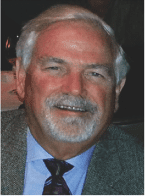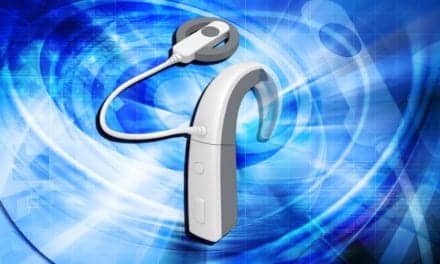Our quest in this blog post is to review the beginnings of Audiology to find the person who began the profession—and became the true “Father of Audiology.”
As professions evolve, Audiology developed rather rapidly. With roots in the speech sciences of the 1920s and 1930s and the basics of audiometry by C.C. Bunch (see Jim Jerger’s sidebar on p 18), the profession really got its start during World War II in the treatment of hearing-impaired American veterans. Newby reports that the first use of the word “audiology” has been traced to Trainor and Hargrave (1939) by Kenneth Berger, PhD. The term “audiology,” however, was not used regularly until 1945 when Raymond Carhart and Norton Canfield applied the term to the field, which had been created through their respective fields of speech pathology and otology.
An excellent historical discussion of the development of Audiology during the World War II period is the 2002 Audiology Today monograph, The Origins of Audiology: American Wartime Military Audiology, by Moe Bergman, EdD. This monograph reads like a virtual “Who’s Who” of Speech and Hearing in the 50s, 60s, and 70s, and should be on the reading list for every basic audiology course. It was this group of Audiology pioneers and their clinical experiences, developed in the shadows of war, who shaped the profession in their publications, textbooks, teaching, research, and leadership that molded Audiology into a robust, research-based, clinical profession.
While all of these pioneers substantially contributed to the development of the profession, one individual—Raymond Carhart—clearly stands out as the undisputed worldwide “Father of Audiology.”
Carhart and Audiology
Raymond Thomas Carhart was born on March 28, 1912, in Mexico City. He received a BA degree in Speech & Psychology from Dakota Wesleyan University in 1932, and went on to become one of Northwestern’s first PhD graduates in speech pathology, experimental phonetics, and psychology as a student of C.C. Bunch. He remained at Northwestern as an instructor in Speech Re-education from 1936 to 1940, becoming an associate professor in 1943.
The following year, Dr Carhart joined the US Army Medical Administrative Corps as a captain, ultimately serving there for 7 years. He was director of the Acoustic Clinic and was Acoustic Physicist at the Deshon General Hospital in Butler, Pa—one of the three facilities designated for hearing rehabilitation during WWII—until 1946. After the war, he returned to Northwestern where he ultimately became a full professor as well as at the Medical School on the Chicago Campus in 1948, positions he held until his sudden death on October 2, 1975 at age 63.
Carhart may be best known for developing and refining speech audiometry, particularly as it pertains to the efficiency of hearing aids. Most of us remember the “Carhart Method” of hearing aid evaluation that was the “tried and true” technique for about 40 years. While this method was proven to be unreliable and invalid in the 1980s, the technique offered extreme face validity and patients still ask why we do not do this type of an evaluation for hearing aid fittings today. Although his life was cut short, he has lived on through his many students who (including Dr Jerger) are pillars of the profession, conducting their own research, writing the textbooks, directing audiology programs, and founding associations like the Academy of Doctors of Audiology, American Academy of Audiology, and Academy of Rehabilitative Audiology.
As a student or a professional, I did not have the opportunity to meet Dr Carhart, but I have had the opportunity to meet and work with a number of his students who have carried on his legacy. One of my favorite “Carhart quotes” is part of his introduction to Mike Pollack’s first edition of Amplification for the Hearing Impaired (1975), and it suggests his love of the clinic and those who practiced in it.
“The researcher can gather fact after fact at his leisure until he has a sufficient edifice of evidence to answer his question with surety. How different is the clinician’s task. He too, is an investigator but the question before him is, ‘What can I do now about the needs of the person who is seeking my help at this moment?’ The clinician proceeds to gather as much data as possible about his client as he can in a clinically reasonable period of time. He does not have the luxury to wait several months or years for other facts to appear. The decisions of the clinician are more daring than the decisions of the researcher because human needs that require attention today impel clinical decisions to be made more rapidly and on a basis of less evidence than do research decisions. The dedicated and conscientious clinician should bear this fact in mind proudly. His is the greater courage.”
In the words of Jay Hall, PhD, another of Dr Carhart’s students, “stumbling into Northwestern University [circa 1972] was one of the luckiest breaks in my life. The students were top notch, the academic setting stimulating and, best of all, I was among a Who’s Who in Speech Pathology and Audiology. I was assigned reception desk duty to earn my stipend, and each day I had the opportunity to greet the notables who entered the then new Francis Searle Building, including the Father of Audiology—Raymond Carhart.”

|
Robert Traynor, EdD, MBA, is CEO at Audiology Associates Inc in Greeley, Colo, and serves as an adjunct professor at the Univ of Florida, the Univ of Colorado, and the Univ of Northern Colorado. His book, co-authored with Robert Glaser, PhD, Strategic Practice Management, now in its 2nd edition, is widely used in college programs. Correspondence can be addressed to Dr Traynor at [email protected]. |



